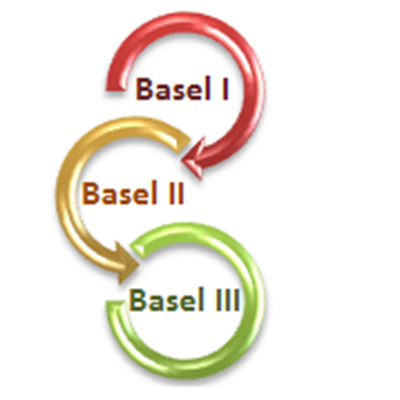Basel standards are worldwide financial guidelines given by the Basel Committee on Banking Supervision (BCBS). The Basel standards work to organize banking guidelines across the globe, determined to fortify the worldwide financial framework. The Basel Committee on Banking Supervision (BCBS) comprises delegates from national banks and administrative specialists of 27 nations (counting India).

Its secretariat (managerial office) is situated at the Bank of International Settlements (BIS), settled in Basel, Switzerland. Subsequently, the name Basel standards. The Basel Committee has given three arrangements of guidelines starting in 2018 known as Basel-I, II, and III.
Purpose of Basel Norms
The motivation behind the agreement is to guarantee that monetary foundations have sufficient capital on record to meet commitments and ingest unforeseen misfortunes. India has acknowledged Basel concurs for the financial framework. Truth be told, on a couple of boundaries, the RBI has endorsed tough standards when contrasted with the standards recommended by BCBS.
Types Of Basel Norms
Basel-I
Basel-1 was presented in 1988. It focussed essentially on layaway (default) hazard looked by the banks
According to Basel-1, all banks were needed to keep a capital sufficiency proportion of 8 %.
- The capital ampleness proportion is the base capital necessity of a bank and is characterized as the proportion of money to chance weighted resources.
- The capital was grouped into Tier 1 and Tier 2 capital.
- Level 1 capital is the center capital of a bank that is lasting and solid. It incorporates value capital and unveiled stores.
- Level 2 capital is the beneficial capital. It incorporates undisclosed stores, general arrangements, arrangements against Non-performing Assets, combined non-redeemable inclination shares, and so on.
- The danger weighted resource is the bank’s resources weighted by hazards.
- The resources of the bank were grouped into 5 danger classes of 0 % or 0, 10 % or 0.1, 20 % or 0.2, 50 % or 0.5 and 100 % or 1. Model money into 0 % hazard classification, home loan into 20 % hazard class, and corporate obligation into 100 % hazard class.
- Lets say-a bank has Rs.100 as money holds, Rs.200 as home loan and Rs.300 as credits offered out to organizations. The danger weighted assets= (Rs.100 * 0 ) + (Rs.200 * o.2) + (Rs.300 * 1) = 0 + 40 + 300 = Rs340
- Accordingly, this bank needs to keep 8 % of Rs.340 as the least capital. (in any event, 4 % in level 1 capital)
India embraced Basel-1 out of 1999.
Basel-II
Basel-II was given in 2004.
This system depends on three boundaries.
- Least capital prerequisites: Banks should keep a base capital ampleness necessity of 8% of hazard weighted resources. Additionally, Basel-II partitions the capital into 3 levels. Level 3 capital incorporates transient subject credits. (subject credits imply lower in the positioning. It is reimbursed after different obligations in the event of bank liquidation.) In any case, the meaning of capital sufficiency proportion was refined.
- Administrative oversight: According to this, banks were needed to create and utilize better danger executive procedures in checking and dealing with every one of the three kinds of dangers that a bank faces, viz. credit, market, and operational dangers
- Market Discipline: It expanded divulgence necessities. Banks need to compulsorily reveal their CAR, hazard openness, and so forth to the national bank.
As of now, India follows Basel-II standards.
Basel-III
The monetary emergency of 2007-08 uncovered weaknesses in the Basel standards. Hence, the past agreements were fortified.
- Basel-III was first given in late 2009. The rules mean to advance a stronger financial framework.
- Capital: The capital ampleness proportion is to be kept up at 12.9 %. The base tier 1 capital proportion and the base tier 2 capital proportion must be kept up at 10.5 % and 2 % of hazard weighted resources separately.
- Moreover, banks need to keep a capital protection cushion of 2.5%.
- Counter-recurrent support is additionally to be kept up at 0-2.5%.
- The influence rate must be in any event 3 %. The influence rate is the proportion of a bank’s level 1 cash flow to average absolute solidified resources.
- Liquidity: Basel-III made two liquidity proportions: LCR and NSFR. The liquidity inclusion ratio (LCR) will expect banks to hold a cushion of excellent fluid resources adequate to manage the money outpourings experienced in an intense momentary pressure situation as indicated by administrators. The base LCR necessity will be to arrive at 100% on 1 January 2019. This is to forestall circumstances like “Bank Run.” The objective is to guarantee that banks have sufficient liquidity for a 30-days stress situation if it somehow managed to occur. Then again, the Net Stable Funds Rate (NSFR) expects banks to keep a steady subsidizing profile comparable to their reeling sheet resources and exercises. NSFR expects banks to subsidize their exercises with stable wellsprings of money (solid over the one-year skyline). The base NSFR prerequisite is 100 %. Accordingly, LCR estimates present moment (30 days) versatility, and NSFR estimates medium-term (1 year) strength.
The cutoff time for the execution of Basel-III was March 2019 in India. It was deferred to March 2020.

